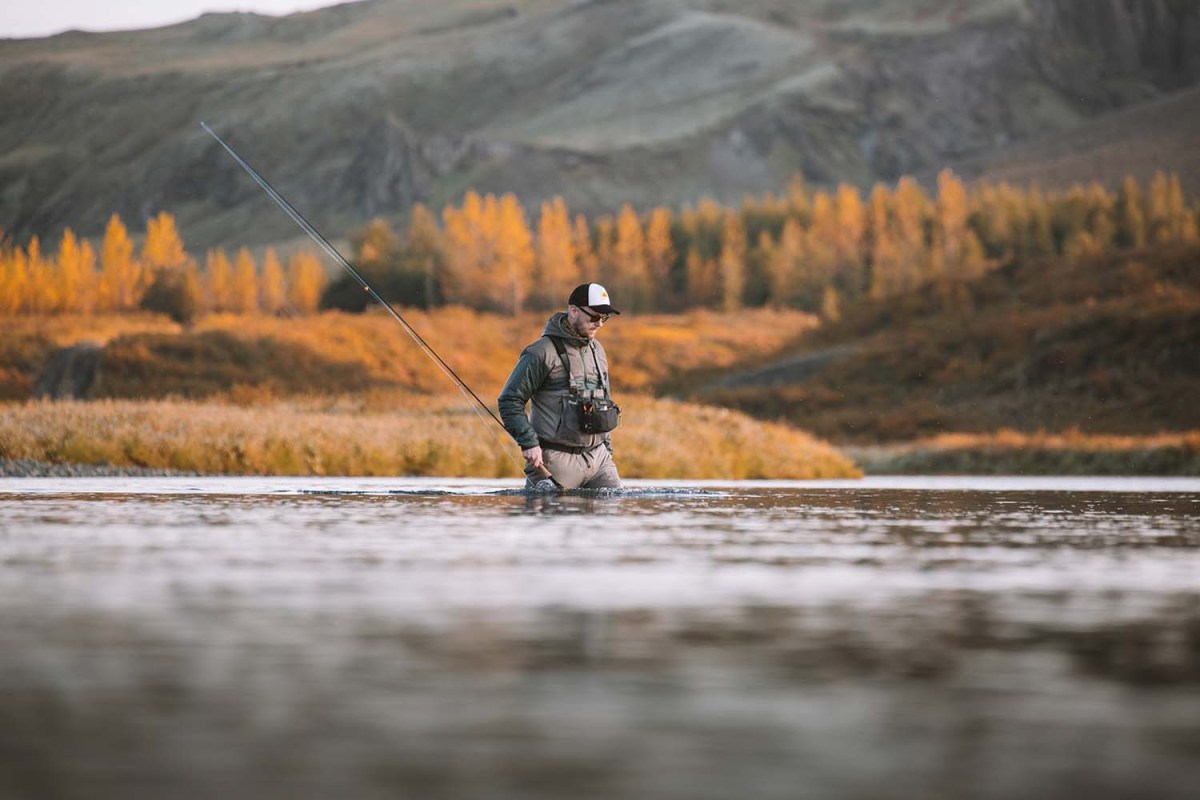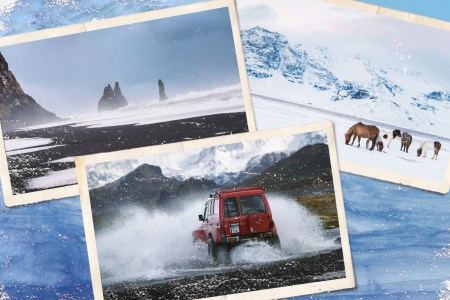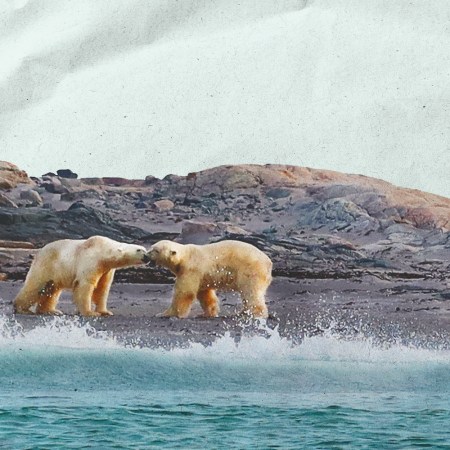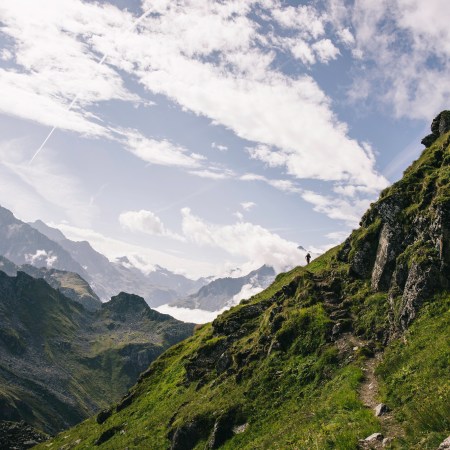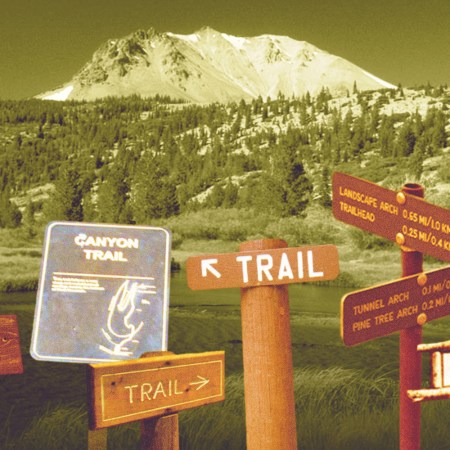Waterfalls are running backwards. Powerful, gusty winds throwing the water right back up in the air where it dissipates into a misty spray blending into the stormy skies. It’s a stern reminder that here along Iceland’s southern coast, nature reigns and those who would dare to spend long days outside had best come prepared.
But we dared. And we came prepared.
Most people travel to Iceland to hike on a glacier, watch cliffside puffins or ride the unique tolt gait of the study, shaggy Icelandic horses. I’ve come to Iceland to fish for sea-run brown trout, exploring a new fishery opened up by Fish Partner, the leading fly-fishing booking agency and guide service in the country.
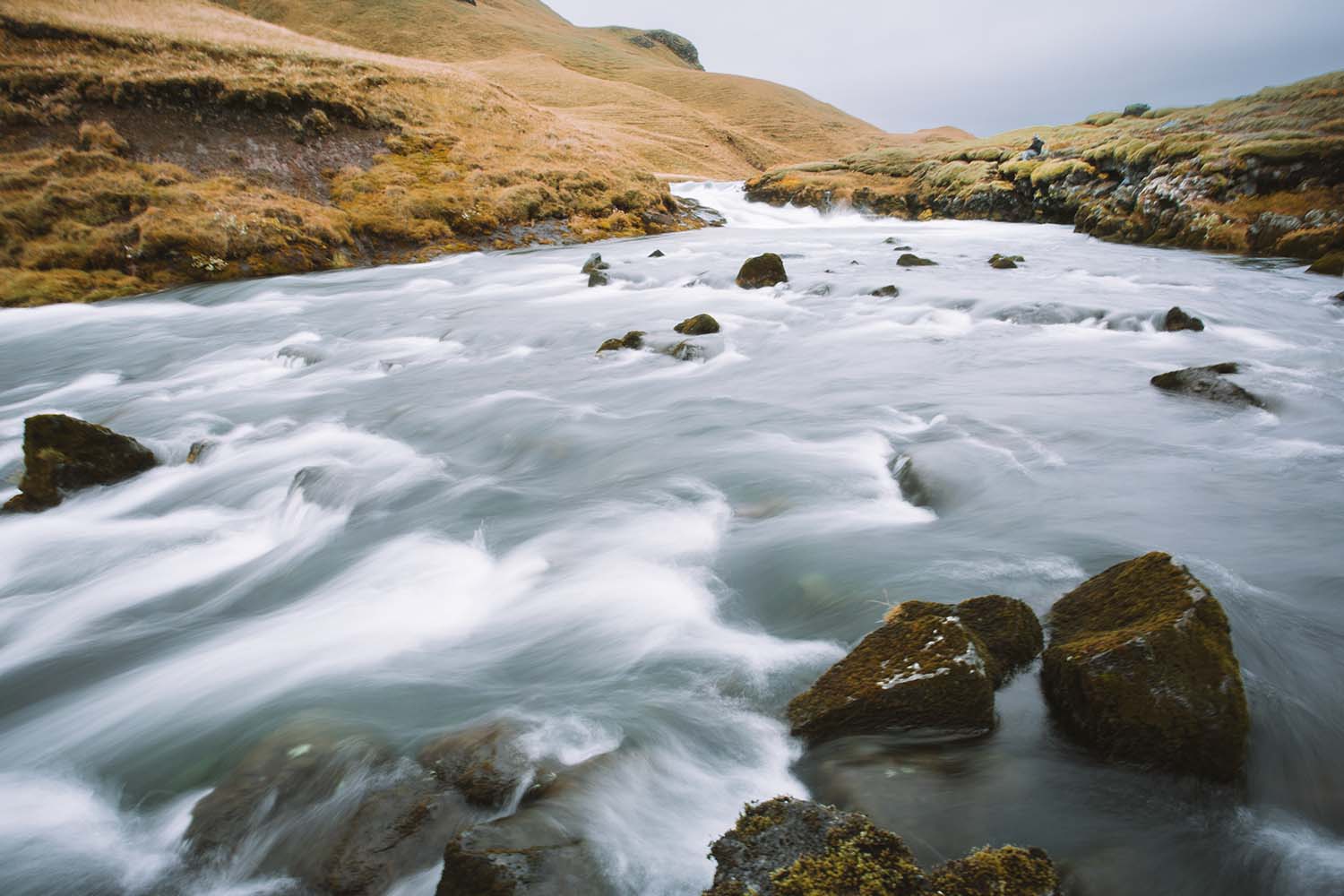
A few days ago, it had been warm and sunny, comparatively mild weather for September in Iceland. But sea-run brown trout fishing is best when it’s cool, overcast and rainy, and so here we are. Bundled up like veritable Michelin Men (and women), carrying rods in gale-force winds, we wade across frigid water to access a promising run in the hopes fish are waiting for us
Guide Jerome Saunders, a Swede working in Iceland, and U.S.-based anglers Jim and Amy Ray are all in. We’ve had coffee, bundled up in all our warm layers and are ready to get to work. This is a far cry from the lazy vacation many people seem to prefer, and it gives our little group an immediate camaraderie. We each understand the strange pull of sea-run brown trout; we’re each addicted to the perpetual hope that maybe — just maybe — our personal best fish is somewhere nearby.
It’s not a stretch, either: both Jim and I land our personal-best sea-run brown trout on this trip, each fish over a yard long and pristine. Both are released strong and healthy back into the river, to complete their trip upstream to spawn and then return back to the ocean.
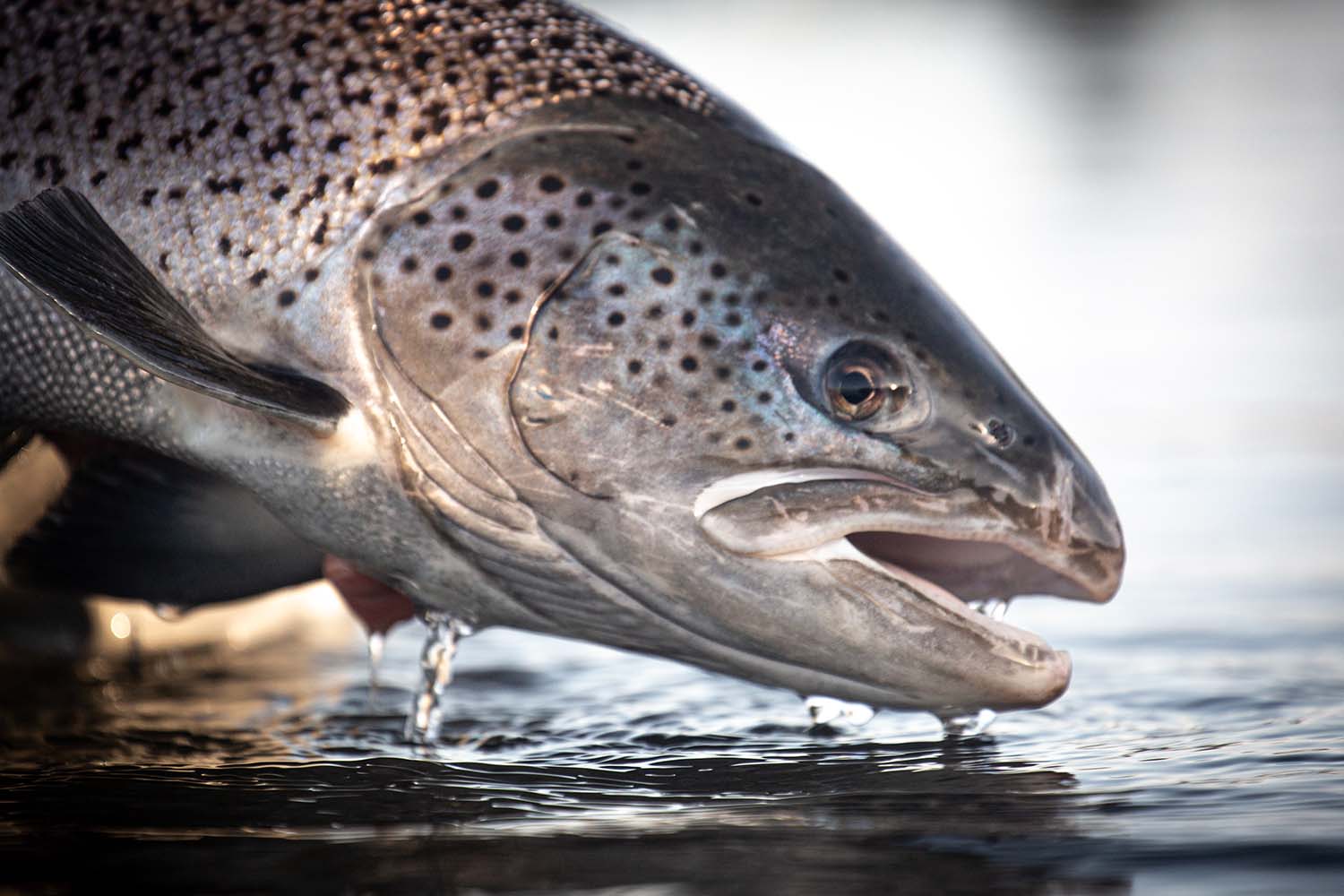
Sea-Run Brown Trout 101
What is it that makes sea-run brown trout so special that anglers travel long distances and brave inclement weather to fish for them? Serious fly anglers around the world speak of sea-run brown trout (often simply called “sea trout”) in hushed and reverent tones. One of the most sought-after and respected fish for sportsmen and woman, sea trout are what’s called an anadromous salmonid. “Anadromous” refers to fish that migrate from freshwater rivers to the ocean and then return each season back to their natal streams to spawn. In layman’s terms, “salmonid” is the salmon family of fish, including salmon, trout, char, grayling and freshwater whitefish.
In short, these are trout that go from freshwater to saltwater and back again, every year. Considering the harsh oceanic conditions of the northern Atlantic — including a veritable bevy of predators ready to feast on fresh fish — the very idea that these browns make the run from fresh to salt to fresh each year is staggering. Catching and holding one of these fish feels a bit like holding a piece of history. After all, that fish has likely traveled more miles than most Americans have.
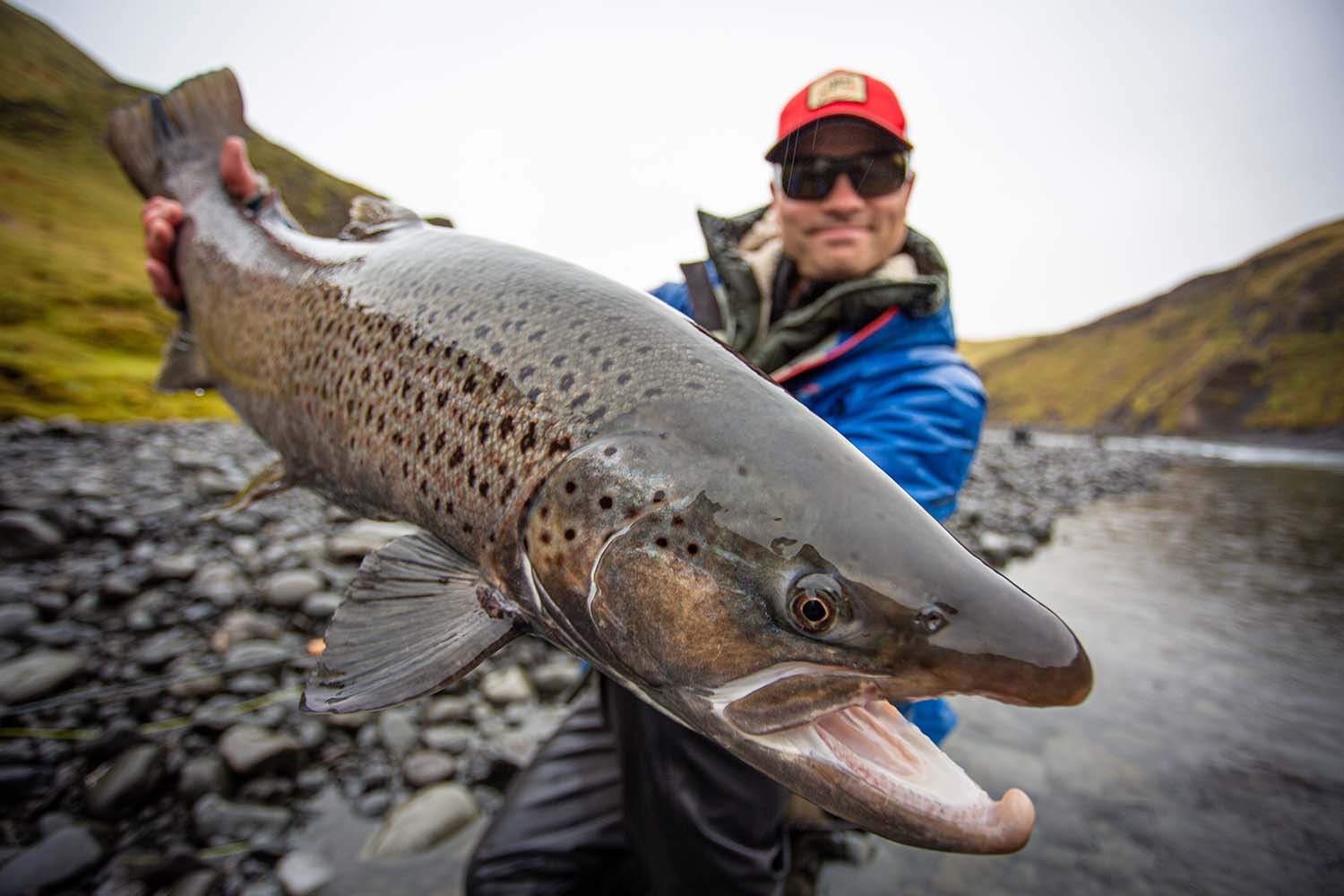
Traditionally, sea-run brown trout are fished using two-handed fly rods, called Spey rods. Longer than the single-handed fly rods commonly fished in the States (13’-15’, as compared to an average of 9’), Spey rods allow for a longer reach and also a unique casting technique that makes managing large amounts of line easier in the wind. Fish Partner’s team can deep-dive into the gear side of things with anglers before their trip; one word of advice I’d offer is this: pack layers. So many layers. Even if the air temperature is relatively warm (it hung anywhere from 35-50F during my September trip), damp rain and high winds will make it feel colder. Base layers, midlayers and very waterproof waders and jackets are key here, as well as warm hats and fingerless gloves are key (wool will keep you warm even when they get wet).
Knocking Around Iceland’s Adventure Coast
The nation is less touristed than you think, especially in the south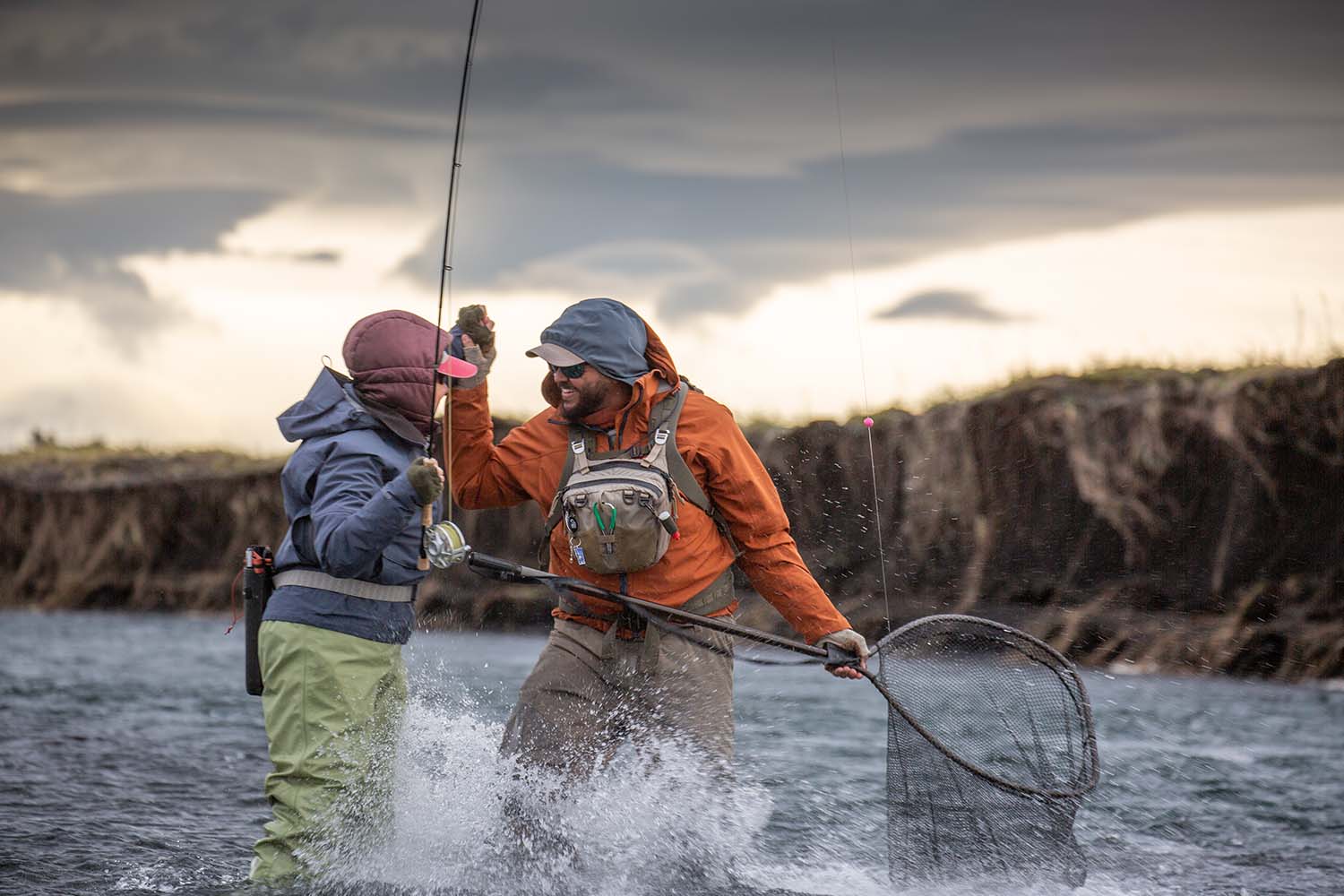
Meet Fish Partner
In a fishery such as this, it’s imperative that a lodge and guide program is well run. Enter Kristján Páll Rafnsson and Sindri Hlíðar Jónsson, the co-owners of Fish Partner, a specialized fly-fishing travel agency, lodge operator and outfitter. Earlier in the week I’d had an afternoon to fish with Sindri and Eiður Kristjánsson, the Fish Partner Sales Manager and a famed fly-tyer (a fact which makes him the perfect resource for incoming anglers who want to ensure they are preparing the right flies for the trip). Eiður and I bonded over a three-and-a-half-hour Pearl Jam session during the car ride from Reykjavík to the Tungufljót River — a solid welcome to Iceland after a long flight.
In all, the Fish Partner team has more than 70 years of combined fishing experience and more than 30 years of experience helping anglers from all over the world have successful fishing trips in Iceland. Suffice to say, they know fishing, they know Iceland, and they have a deep love for both.
The trio, along with a team of talented guides from Iceland and around Europe, run a variety of operations in Iceland. The main lodges are the Highlands Lodge where guests can fish for trout and char, and Battle Hill Lodge, located on the sea-run brown trout waters we’re currently fishing. The young, savvy team are adept anglers themselves, a passion which shows in the day-to-day operations at the lodge.
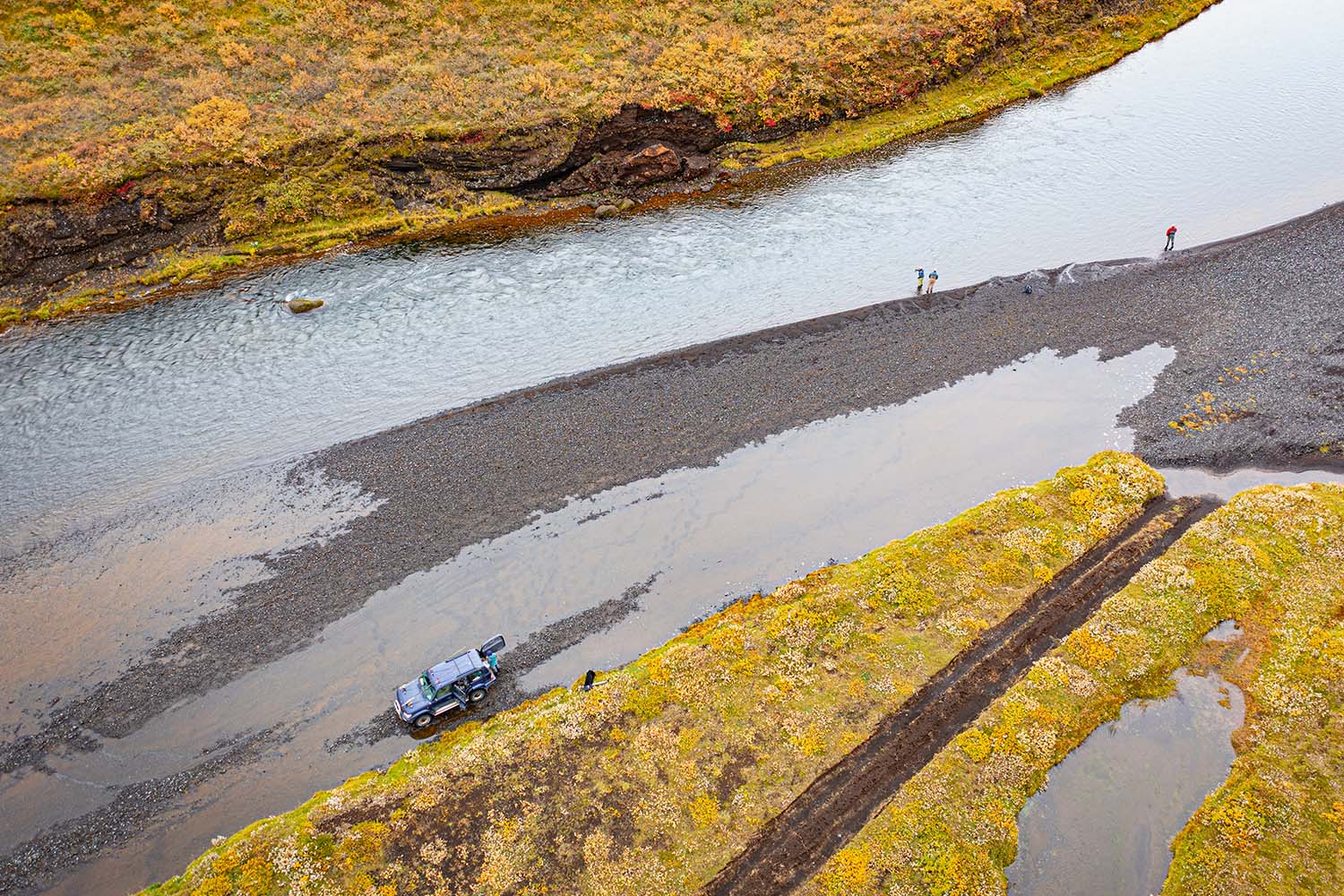
The Battle Hill Fishery
Battle Hill Lodge is located in a renovated farmhouse, cozy and homey, overlooking Vatnajökull Glacier (Europe’s largest icecap) and a dramatic lava field. The lodge’s namesake Battle Hill — “Orustuóll” in Icelandic — was the exact spot where Hróars Tungugoði, a famed Icelandic Viking chieftain from the 10th century, was killed. The lodge is Icelandic farmhouse chic; waders and boots are stored in the old milk barn, the community living area is comfortable and the bathrooms even have heated floors (which is near-blissful after a cold day on the water). Talented Argentine chef Fabi Trochine oversees the kitchen and turns out three quality meals a day, including dinners fine enough one might expect to find them in a Buenos Aires restaurant.
For most visitors to Battle Hill Lodge, however, the lodge itself is secondary. Of course, “the hang” with fellow anglers — that ritualistic time of relaxation and story-sharing — is part of the experience, but most guests here come to fish. And to fish hard. The rivers Fish Partner has access to here are some of the premiere sea-run brown trout fisheries in the world, and for many who walk through the doors of Battle Hill Lodge, this is a once-in-a-lifetime experience.
Anglers are paired with a guide for their week of fishing and rotate through different area rivers each day. From the sheep-dotted farmlands through which the Tungufljót River flows to where the massive Vatnamót River cuts through Mordor-like lava fields, no two days of fishing feel the same. Fish Partner’s unprecedented access to these waters lets anglers fish sections (or “beats”) that have very little pressure (Fish Partner’s guests are the only ones who are allowed to fish these beats) and experience Iceland fishing as it should be experienced — in the elements, on pristine waterways and on chasing wild fish who have just recently pushed in from the ocean.
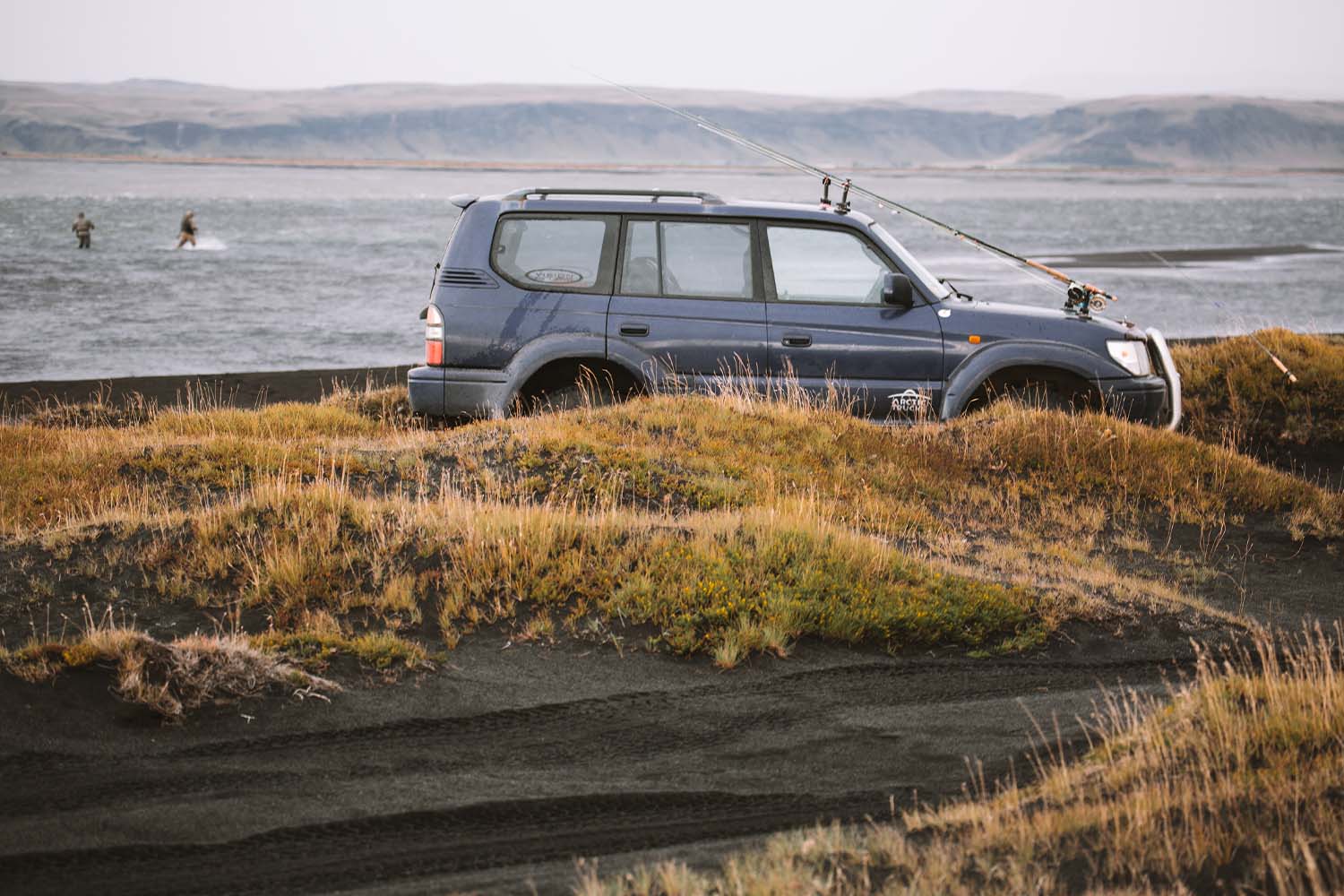
Ditch the Tourists, Meet the Fish
Most days I fish with Kristján and we go hard, keeping a tempo which would wear most anglers out after a few days. But like a few other fishermen I’ve met around the world, Kristján is driven by a genuine love for the fishery and the fish which live here. This is his business, sure, but within five minutes of meeting him it’s plain to see that this is also his passion. For some people, chasing fish with a fly rod is simply in their DNA, and they are most at home on the water, regardless of conditions. It’s that passion — one which Sindri and Eiður share — which has been conveyed into the Fish Partner business and continues to help make this fishery so successful.
It’s easy to get excited about fishing exotic, far-away rivers when the people you’ll meet there are just as excited about the fishing as you. Keen anglers readily recognize other anglers, and whether fishermen head to Battle Hill for their first international fishing trip or their thirtieth, they’re going to find new friends on the wild rivers of the southern coast.
So, while a trip to Iceland might bring to mind hot springs, busy tourist roads, and glacier cruises, consider heading off the beaten path and seeing the southern coastline with a fly rod in hand. There are few better ways to get to know a place by standing in the water and feeling the relaxing cast-swing-step-cast-swing-step tempo of fishing through a run, and it’s an experience unlike any other in Iceland.
And once you meet your first sea-run brown trout, you’ll never be the same again.
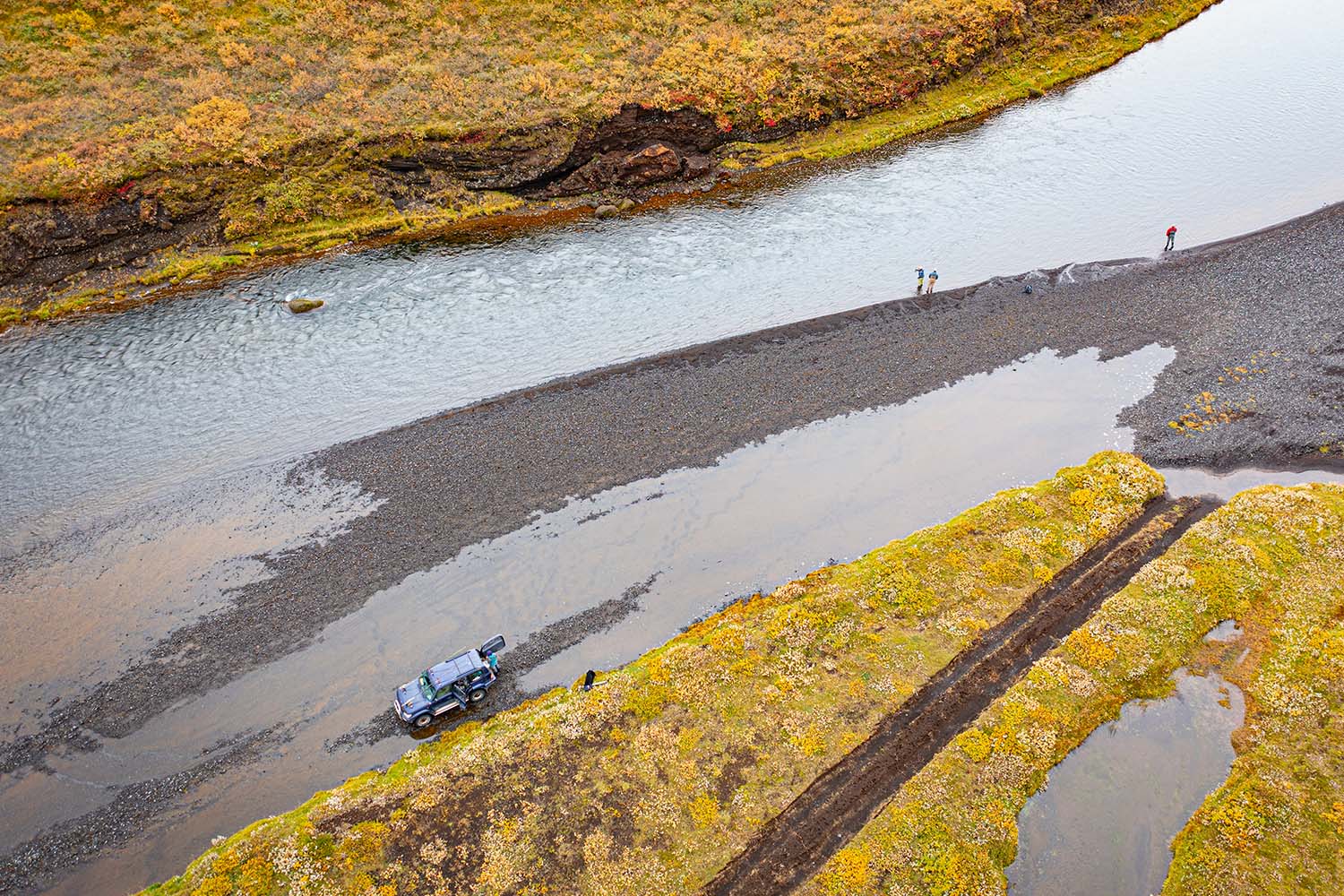
If You Go
Fishing: Talk with Fish Partner about fishing and lodge options. Battle Hill Lodge is ideal for sea-run brown trout fishing, and the Highlands Lodge is home to excellent trout and char fishing. The team can help you decide what is best for your skillset and goals, and answer any questions about gear, logistics and add-on Iceland tours.
The Battle Hill Lodge has two seasons; one in the spring (April and May) when the fish make their return to the sea. The autumn season (August, September and October) occurs when the fish return to the rivers to spawn. The Highlands Lodge season runs June through August.
Flights: Keflavík International Airport is about 45 minutes from the capital of Reykjavík. The airport is small and easy to navigate; my time through customs and immigration was less than 30 minutes, which included a lovely talk with the immigration agent about fishing.
Gear: Battle Hill Lodge waters are best fished with 8-weight fly rods, both single- and double-handed (Spey). I fished my 13’6” 8-weight Spey rod the most, with sink tips and classic Intruder patterns. I also kept a single-handed 8-weight rod rigged with a double-nymph rig (Squirmy Wormies and Rubberleg nymphs proved the most productive, especially after rainy days) and switched it to a streamer rod to swing through smaller rivers. Fish Partner can answer any and all questions about gear and help set you up for success before your trip. (Fishermen love to talk about gear…it’s one of life’s facts.)
This article was featured in the InsideHook newsletter. Sign up now.
